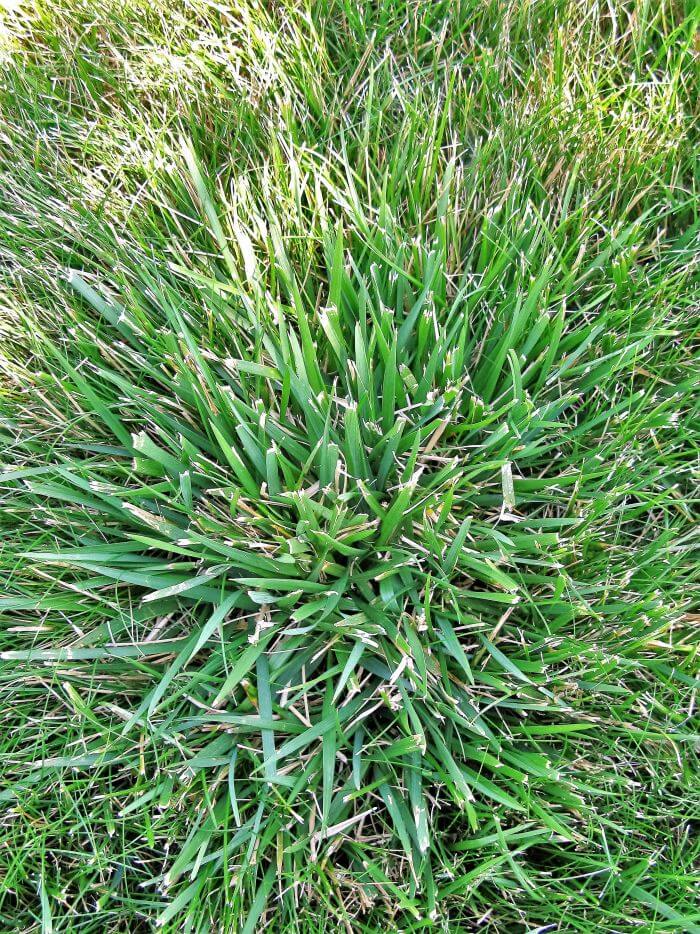Tall Fescue: The Toughest Cool-Season Grass for Lawns

If you’ve ever struggled to keep your lawn alive through summer heat, you’re not alone. Many cool-season grasses look great in spring and fall but fade when temperatures rise. That’s where tall fescue (Festuca arundinacea) comes in.
Tall fescue is one of the most adaptable and durable cool-season grasses. Thanks to its deep root system, it handles drought better than most other turf types. In this guide, we’ll break down the pros and cons, show you where it thrives, explain how it compares to other cool-season grasses, and share practical care tips.
What Is Tall Fescue?
-
Scientific name: Festuca arundinacea (also classified as Schedonorus arundinaceus).
-
Growth habit: Bunch-forming; turf-type varieties may spread slightly with short rhizomes.
-
Appearance: Medium to coarse blades, upright growth, dark green color.
-
Root system: Roots can reach 2–3 feet deep, giving it exceptional drought resistance.
Unlike perennial ryegrass or Kentucky bluegrass, tall fescue is not prized for a “carpet-perfect” look — but it shines in resilience and versatility.
Pros and Cons of Tall Fescue
✅ Pros
-
Heat & drought tolerant — deeper roots mean it stays green longer in summer.
-
Adaptable to soil types — clay, sandy, or loamy soils all support growth.
-
Good durability — handles family use, pets, and light sports.
-
Lower maintenance than ryegrass (fewer fertilizer and water demands).
-
Turf-type varieties (TTTFs) — finer blades, denser growth, better disease resistance.
❌ Cons
-
Doesn’t spread much — bare spots won’t repair themselves.
-
Slower germination (7–12 days compared to ryegrass’s 5–7).
-
Texture is coarser than bluegrass or ryegrass in some cultivars.
-
Can clump if not overseeded.
-
Disease risk — especially brown patch in hot, humid summers.
Where Tall Fescue Thrives (and Where It Doesn’t)
Best Regions
-
Transition zone (Virginia through Missouri, Kentucky, Tennessee): where summers are too hot for bluegrass but winters too cold for Bermuda.
-
Mid-Atlantic & Midwest: thrives in many temperate regions.
-
Parts of the Northeast: does well but sometimes blended with bluegrass for a finer look.
Challenging Regions
-
Deep South: hot, humid summers stress tall fescue.
-
Northernmost states: survives but less winter-hardy than bluegrass.
-
Poor-draining soils: roots can rot if the ground stays soggy.
👉 As North Carolina State Extension puts it: “Tall fescue is the best all-purpose grass for the transition zone due to its tolerance of both cold and heat.”
Tall Fescue vs. Other Cool-Season Grasses
| Feature | Tall Fescue | Perennial Ryegrass | Kentucky Bluegrass | Fine Fescues |
|---|---|---|---|---|
| Germination Speed | 7–12 days (moderate) | 5–7 days (very fast) | 14–28 days (slow) | 7–14 days |
| Root Depth | Deep (2–3 ft) | Shallow | Medium (6–18 in) | Medium |
| Heat/Drought Tolerance | Excellent for cool-season | Poor | Moderate | Moderate–High |
| Wear Tolerance | Good | Excellent | Good | Poor–Fair |
| Shade Tolerance | Moderate | Moderate | Moderate | Excellent |
| Maintenance Needs | Moderate | High | Moderate | Low |
👉 Bottom line: Choose tall fescue if you want a lawn that survives heat and drought without constant pampering.
Planting Tall Fescue
-
Best planting windows:
-
Fall (Sept–Oct): strongest establishment.
-
Spring (March–May): possible, but weeds compete and summer heat comes fast.
-
-
Soil temp for germination: 55–65°F.
-
Seeding rate: 5–8 lbs per 1,000 sq ft.
-
Seed depth: ¼–½ inch, lightly covered.
-
Overseeding: Every 2–3 years to maintain density and prevent clumping.
Lawn Care & Maintenance
Fertilization
-
Annual nitrogen needs: 2–4 lbs per 1,000 sq ft.
-
Schedule:
-
Early fall: starter/balanced fertilizer.
-
Late fall: nitrogen-heavy feeding for winter storage.
-
Early spring: light feeding to encourage green-up.
-
Late spring: moderate feeding to prepare for heat.
-
Watering
-
Establishment: keep soil moist until seedlings are 2 inches tall.
-
Established lawns: ~1 inch per week.
-
Summer: water deeply and infrequently to encourage deeper roots.
Mowing
-
Height: 3–4 inches (taller than ryegrass or bluegrass).
-
Frequency: about once per week.
-
Rule: never cut more than ⅓ of the blade.
Aeration
-
Aerate every 2–3 years to relieve compaction and improve seed-to-soil contact during overseeding.
Common Problems and Solutions
-
Brown patch (humid summers): mow higher, avoid evening watering, reduce nitrogen.
-
Clumping: overseed regularly to maintain density.
-
Insect issues: choose endophyte-enhanced seed for natural pest resistance.
Best Uses for Tall Fescue
-
Residential lawns in the transition zone.
-
Erosion control on slopes and new construction.
-
Parks, schools, and sports fields needing a durable turf.
-
Mixed with ryegrass and bluegrass for balanced performance.
Tips and Lesser-Known Facts
-
Turf-type tall fescues (TTTF) look finer and more uniform than the old pasture varieties.
-
Endophyte-enhanced cultivars help resist surface-feeding insects.
-
Good shade tolerance, though fine fescues are still better for heavy shade.
-
Overseeding every 2–3 years is the secret to avoiding a clumpy look.
Conclusion
Tall fescue is one of the most versatile cool-season grasses, offering durability, heat tolerance, and lower maintenance than ryegrass. While it doesn’t spread like bluegrass or germinate as fast as ryegrass, its deep roots make it a reliable choice in challenging climates — especially the transition zone.
Choose tall fescue if you want a tough, attractive lawn that stays green through summer without constant care. With the right overseeding schedule and mowing height, it can give you years of consistent performance.
- How to Sharpen Mower Blades Like a Pro: Safe, Simple Steps for a Cleaner Cut
- Centipede Grass: The Low-Maintenance Lawn for Warm Climates
- Bermudagrass: The Tough, Sun-Loving Lawn That Thrives in the Heat
- Zoysiagrass: The Elegant, Durable Lawn for Warm and Transitional Climates
- Mowing Height Made Simple: How to Pick the Right Height for Your Lawn (Any Grass, Any Climate)